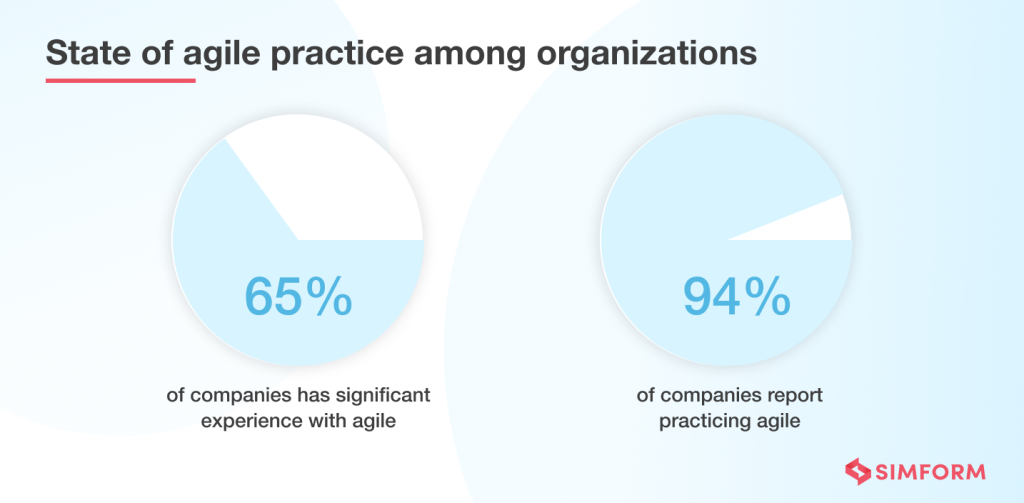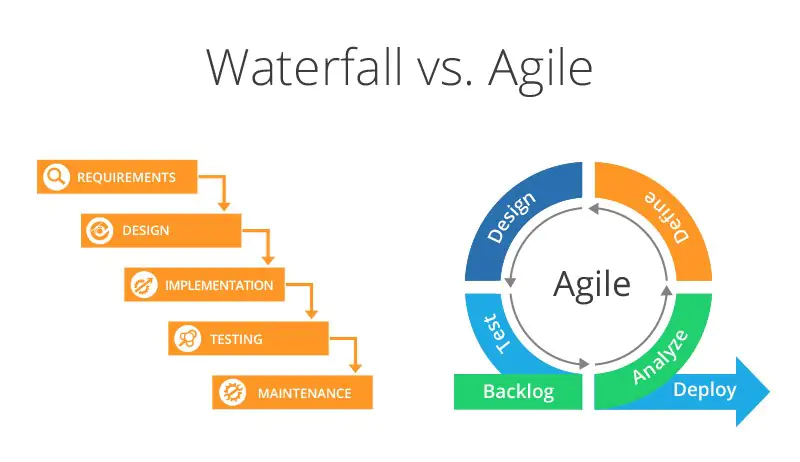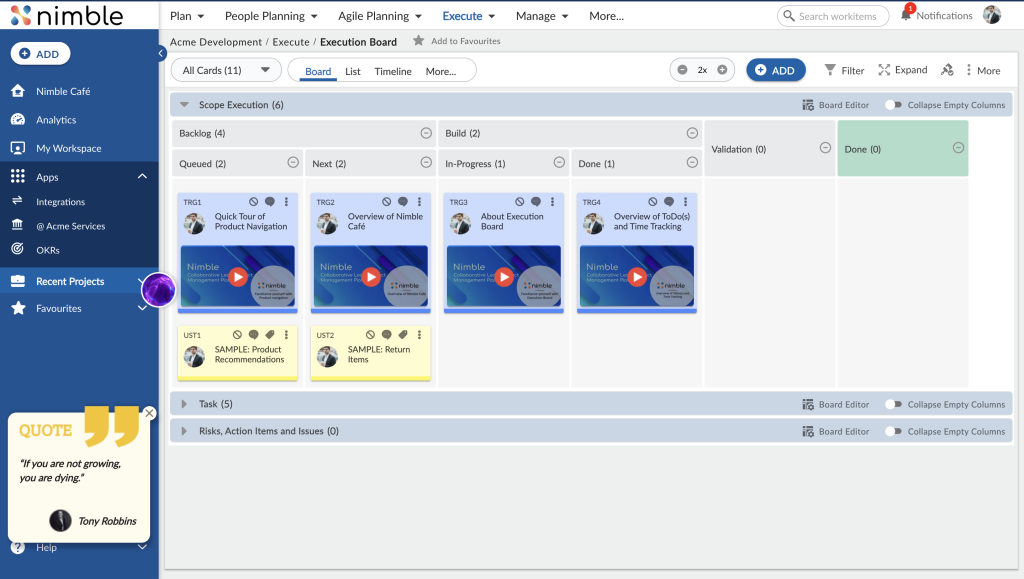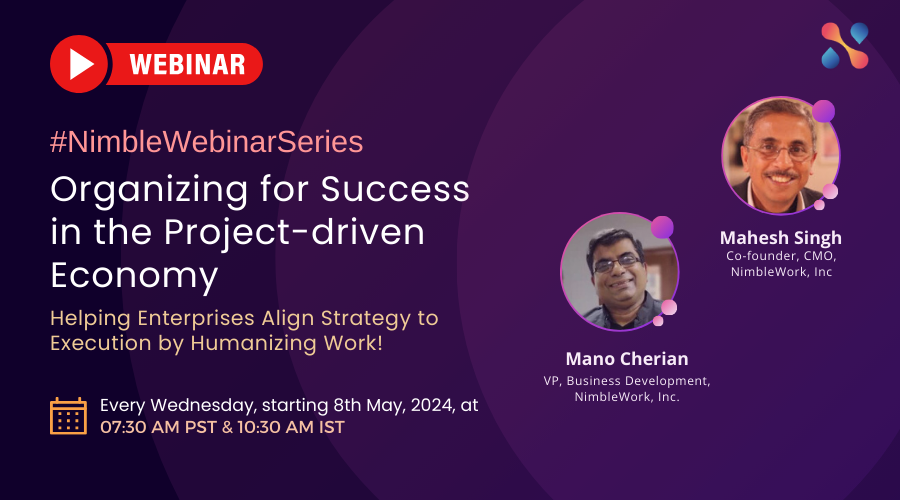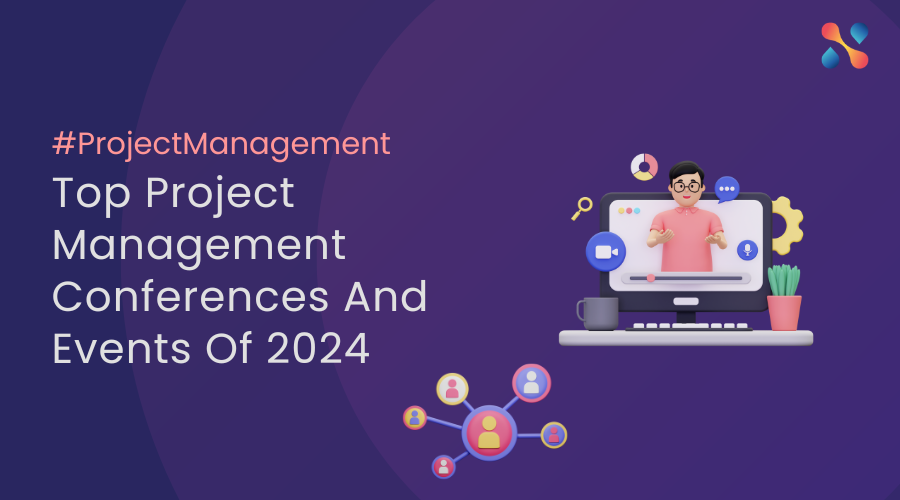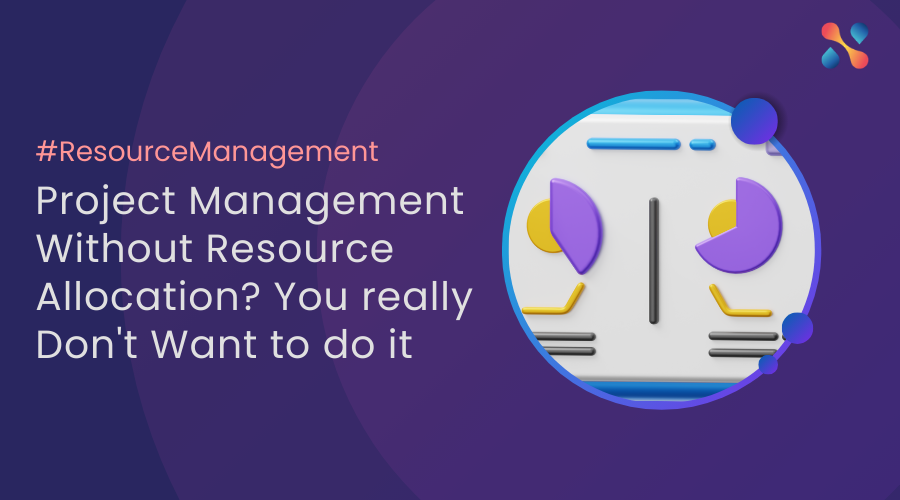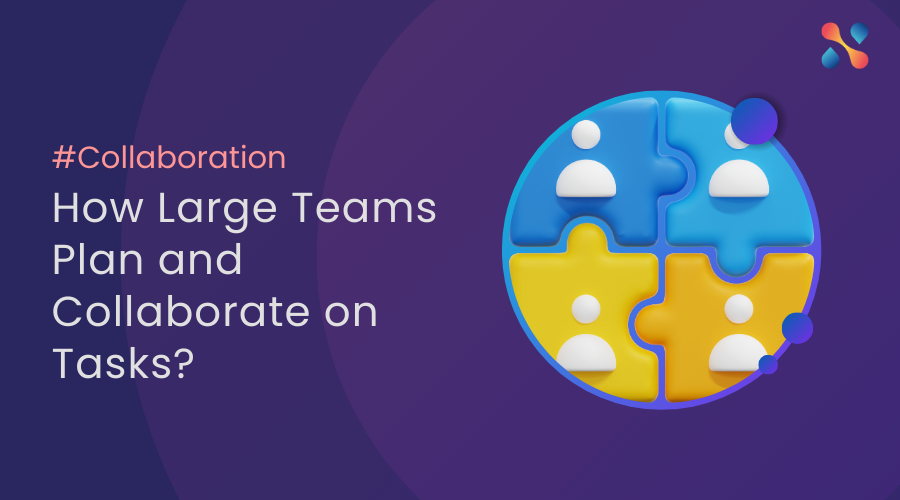As the Agile project management framework reaches adoption maturity at lean, progressive and disruptive startup firms, many teams at established organizations are struggling to fully embrace the Agile project management framework at scale. This is substantiated by the fact that large enterprises are slow to embrace change, and Agile is predominantly driven by a shift in mindset, culture and process of operating at speed. Consider the following research statistics:
• Around 30% of organizations adopting the Agile methodology face at least 10 major challenges.
• Among these challenges, the resistance to change within the organization is the biggest challenge for 34% of the organizations.
• This is followed closely by 29% of the organizations that are unable to align their organizational culture with the values and key principles behind the Agile framework.
• Another research finds that dependence on legacy systems is also a major inhibitor to Agile adoption for 42% of the organizations.
Source: simform.com
This is typical for large enterprises and institutions running mission-critical apps and services on legacy technologies. Financial institutions struggling to migrate from legacy COBOL-based IBM mainframe systems is a popular example. This is partly due to well-established security and reliability performance of legacy machines, growing skills gap in COBOL systems and lack of stakeholder buy-in for migrating these systems to a modern alternative.
And since a true Agile framework promotes rapid release cycles of production-ready code, integrating digital transformation services with legacy machines at the fast pace of Agile becomes a complex process. Large enterprises are particularly constrained by this limitation, as 90% of Fortune 500 organizations run COBOL-based legacy systems. These organizations use COBOL for 85% of all business transactions and 70% of all business logic and information.
How to migrate from Traditional PM to Agile?
A variety of models and frameworks for adopting the Agile project management methodology exist. Organizations can employ a migration framework depending on their readiness to transition, incorporate change, manage risks and enable a culture of a truly Agile enterprise. In general the transformation process is captured across the following phases:
• Understand the current state of maturity to identify change requirements, identify the desired future state and optimal pathway to realize this goal based on organizational culture and business values. Some of the popular maturity assessment models include the Scrum Maturity Model (SMM), Agile Fluency Model and Agile Maturity Matrix.
• Educate the workforce responsible for adopting changes in their operational processes, culture, team dynamics and expectations.
• Execute actionable guidelines based on a proven framework to realize these goals. Improving on the plan based on feedback, knowledge of internal processes and changing external dynamics that may impact organizational behavior becomes an ongoing process. Common Agile frameworks include Scrum, Kanban and Extreme Programming (XP).
A key challenge here is to find a cohesive model that can empower teams across all stages of transformation maturity to optimally adopt a true Agile framework. While a universal model may not exist, project managers can begin their transition plans across the following key dimensions of Agile transformation:
• Software Development Lifecycle (SDLC) Practices: One of the most important aspects of the Agile methodology is that SDLC processes are characterized in terms of the time element. Traditional SDLC approaches allocate a fixed duration to different tasks sequentially. Naturally, the time spent executing may be longer than expected and planned. As these tasks are performed sequentially, each task varies in time and specificity. The Agile framework addresses this problem by restricting development and release cycles to shorter time duration. Development tasks are highly focused, limited in scope and performed iteratively end-to-end instead of sequential phases.
• Team Practices: In the context of Agile, an important change is to bring together cross-functional teams for a collaborative effort that transforms the SDLC pipeline into an iterative process, with fixed and significantly short development sprints. The goal is to realize rapid release cycles for smaller features and application components with high agility iteratively across shorter cycles, instead of the longer multi-stage traditional SDLC pipeline.
• Management and Leadership Practices: Agile project management methodology is focused on collaboration, adaptability and flexibility of teams to operate within the agreed project scope and business values. Managers don’t dictate task activities, but share project expectations. Teams tend to collaborate with a self-organizing approach where cross-functional experts work together to achieve the intended goals. Team empowerment, autonomy and flexibility in leadership replaces the traditional command and control leadership style, as managers no longer drive team practices.
• Feedback and Continuous Improvement: Teams aim to reflect and learn continuously to improve design, development and testing practices. This is achieved by prioritizing customer satisfaction and welcoming changes during SDLC processes. Cross-functional teams and management personnel communicate daily, simplify requirements and expectations, regularly reflect on the available feedback and adapt to changes proactively.
• Organizational Culture: The influence of organizational culture and mindset is another key component of your Agile transformation strategy. The general idea is that the organizational culture should support the adoption of Agile principles and values in teams, especially as it relates to delegating responsibilities, managing expectations and measuring success. As opposed to the ordered and disciplined approaches led by traditional project management frameworks, Agile thrives in chaos. That is not to say that Agile by its nature is chaotic, but instead it harnesses disruption, through flexibility and adaptability, to innovate and improve. An example is that a customer-centric collaborative mechanism to extract feedback early during the SDLC allows teams to align product features with real-world market needs. In this case, stakeholder and management support empowers devs to incorporate necessary changes for realignment early during the SDLC pipeline.
With this knowledge, you can approach your Agile transformation in different ways. You can start off with a small-team pattern, where some teams of limited cross-functional experts are selected. You can initially focus on adapting processes with low risk and cost of failure – this can include operations other than mission-critical app components, privacy-sensitive data processing and customer-facing product features. At this point, you can evaluate different Agile frameworks such as Scrum, Kanban, Scrumban, XP and others depending on team requirements and business values.
A likely outcome for many organizations may be an inclination toward both the traditional waterfall models and the modern Agile framework systems. In this case, an optimal approach could be a hybrid Agile framework that closely aligns with your existing organizational culture, SDLC and management practices. Such a hybrid mechanism can remedy some of the inherent resistances across all dimensions of your Agile transformation project.
For example, creating a self-organizing team for developing features with uncertain requirements is a good starting point to adopt short, iterative and rapid release cycles. The lightweight hybrid Agile approach would allow teams to obtain rapid customer feedback, without strictly enforcing holistic Agile framework guidelines across all SDLC teams. Such an environment can empower teams to flexibly learn and adapt to a suitable hybrid Agile framework without disrupting team dynamics, organizational culture and the mindset of individuals who may excel in executing on one, but not another project management approach.
Nimble Hybrid Agile allows organizations to build a project management framework based on the core principles of Agile with a well-defined and controlled format of the traditional Waterfall methodology. Based on the team dynamics, organizational culture and flexibility to manage change, teams can adapt their operational workflows and enable a hybrid agile project management framework optimized for their unique business requirements. Signup for a free trial here.


